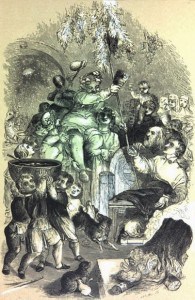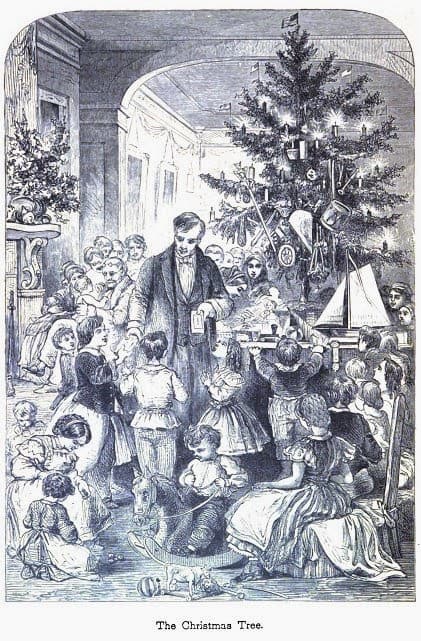History of Christmas
By Anne Dealy, Director of Education and Public Information
Although Christmas marks an event that occurred 2000 years ago, Christmas as Americans celebrate it today is a relatively recent invention. The origins of the modern Christmas celebration are not found in the Bible, so much as in pagan religious traditions and 19th-century American middle class values. Midwinter celebrations have been part of many cultures around the world and portions of these celebrations have been incorporated into the celebration of Christmas. Ancient Romans celebrated Saturnalia, in honor of the god of agriculture and the harvest, in December. The celebration included the reversal of the social order, with masters waiting on servants, and eating, drinking and raucous behavior. The Christian church did not institute Christmas as a holiday until the fourth century and probably chose December 25 in an effort to Christianize these popular pagan celebrations. As a result, pagan traditions of disorder and misrule continued, with the poor expecting food and drink at the expense of the rich and threatening mischief if refused.
Because of these pagan traditions of disorder and the lack of biblical evidence for Christmas, the Puritans and other Calvinists rejected the celebration of the holiday in the 17th century. Christmas was even outlawed in parts of colonial New England. While some (Anglican) Southerners celebrated the holiday with church, dinner, dancing, and visiting, it was not widely celebrated in the North until the mid-19th century. In Geneva, businesses were still routinely open on Christmas Day during the 1800s, and as late as 1900, the post office and some shops had open hours on the 25th.
By the early 1800s Christmas had become a concern to the Protestant middle class, particularly in New York City, where the holiday resembled the modern Mardi Gras or Halloween. Class conflict and poverty in the rapidly growing city made the traditional reversal of roles more problematic. During the holiday season lower class New Yorkers, especially the poor and young, engaged in drunken rioting, theft and assault. Threatened by the disorder, wealthy New Yorkers like Washington Irving and Clement Clarke Moore intentionally tried to remake Christmas as a family-centered holiday using literature. Reinterpreting the Dutch legend of St. Nicholas, Moore’s 1822 poem “The Night Before Christmas” virtually invented the American Santa Claus. Stories in Irving’s Sketchbook popularized a peaceful and harmonious Christmas celebration. Merchants and ministers alike soon embraced this child-centered holiday involving gifts and goodwill. The growth of consumerism, the Victorian focus on children, and Americans’ desire to create their own traditions, all contributed to the adoption of this reinvented Christmas holiday.
When Phineas Prouty Jr. and his wife Adelaide lived in the Prouty-Chew House from 1855 to 1891, Christmas centered on their children. Several diary entries describe the household celebrations during the early years of their marriage with their young daughters Milly and Allie.
“Oh the excitement and wonder of this morning! The tea set! The doll! The candy! Nuts! & cornucopias!! Little Sister has her arms full of pretty things and looks wild at all this noise and frolic. This afternoon I made a Christmas tree and Mill had a private tea party.”
-Adelaide Prouty, December 25, 1859
By the 1860s, Christmas was well established and closely resembled today’s holiday, right down to complaints about commercialism.
For more about the invention of the American Christmas read Stephen Nissenbaum’s The Battle for Christmas.




